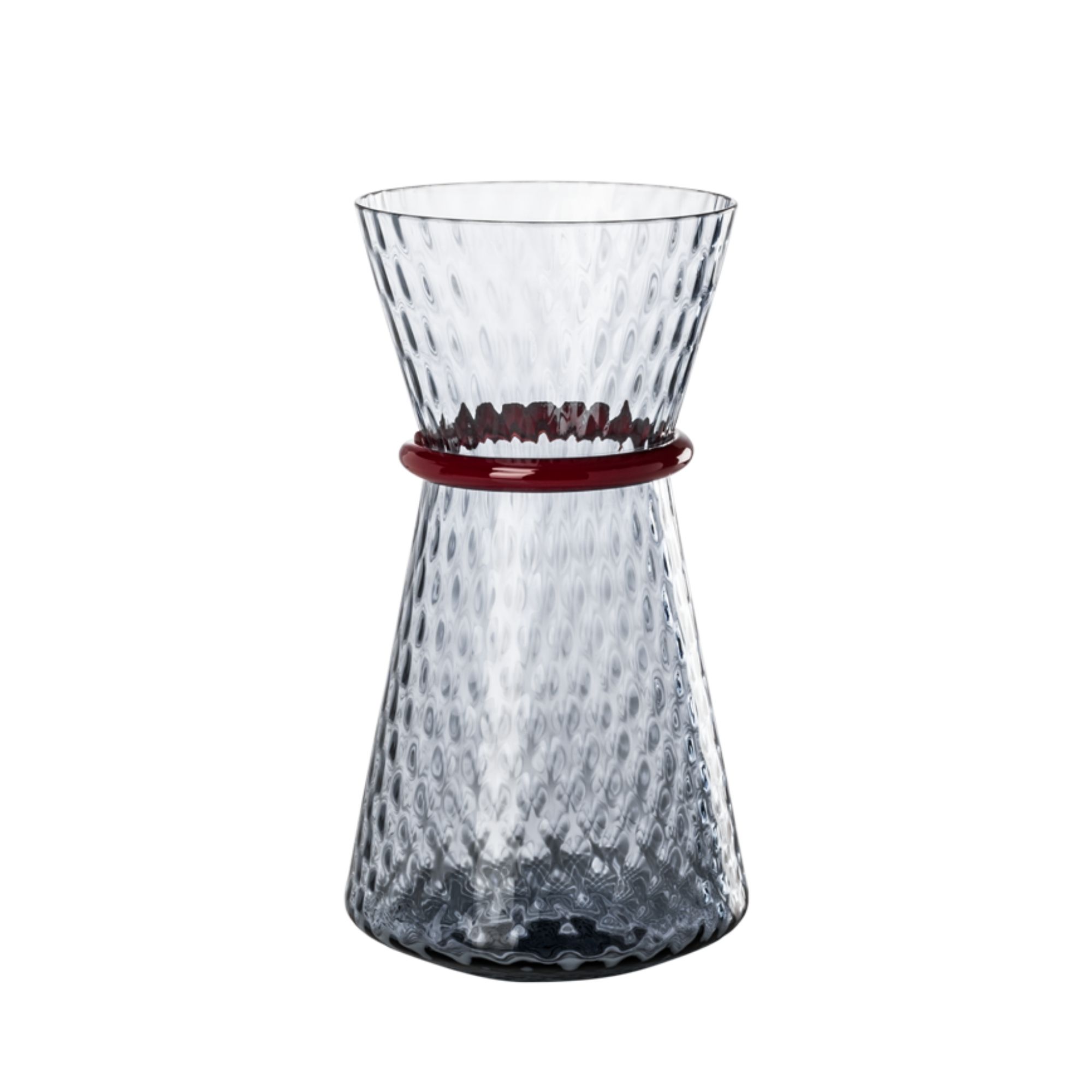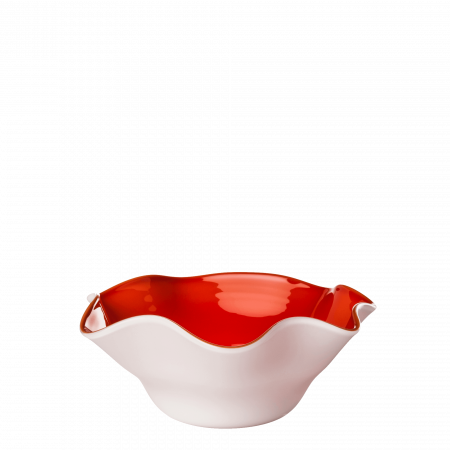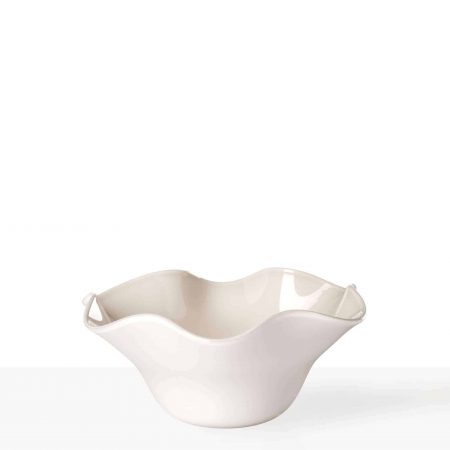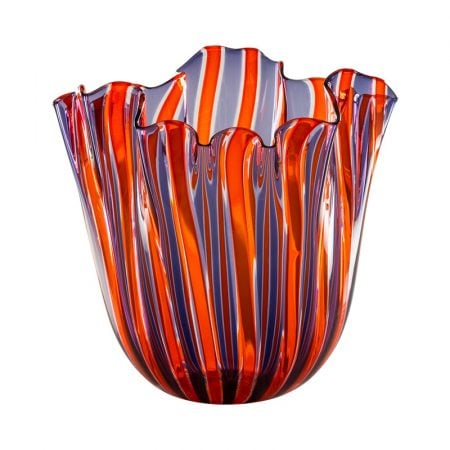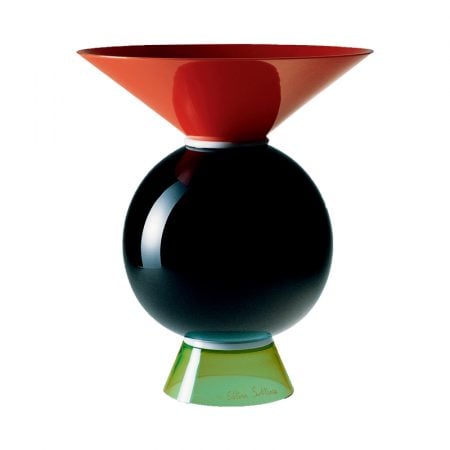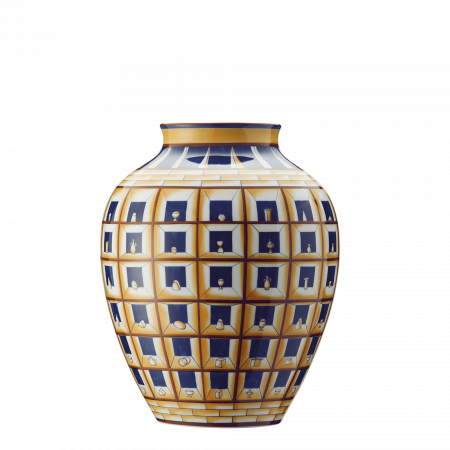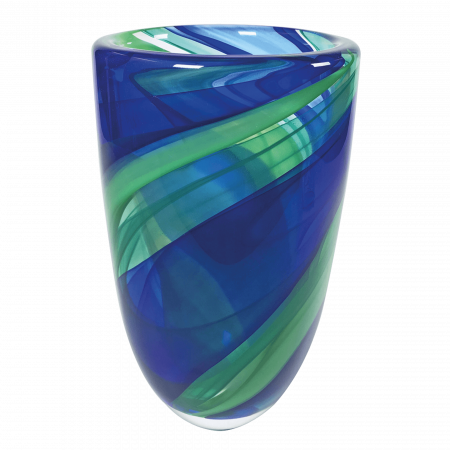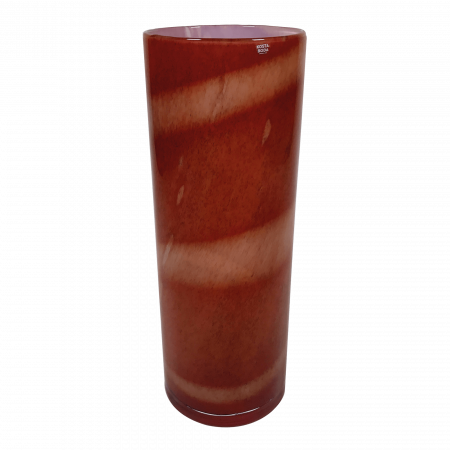VENINI TIARA VASE
SKU: 706.65TIARA
FRANCESCO LUCCHESE | 2018
cod: 706.65
CHARACTERISTICS
HEIGHT: 32 cm
DIAMETER: 18 cm
UNITARY WEIGHT: 5,5 kg
BLOWN BALLOTON, HOT DECORATION
Available product
Available product
Contact us for the purchaseYou must have an account to manage your gift list
Log in or register
VENINI TIARA VASE
“The preciousness of skilful glass processing combined with the infinite potential of light. Here is the jewel work of a thousand facets, brilliant as precious stones. Francesco Lucchese donates it to VENINI in 2018”.
Francesco Lucchese: Born in the province of Messina in 1960, Francesco Lucchese graduated in Architecture at the Politecnico di Milano in March 1985. In June of the same year he received first prize with the design of a folding chair called “Traslazione” presented in the competition for Collective Spaces. Over the years his work as a designer has increasingly focused on the communicative capacity of light and the expressive power of colours in all shades. This is the common thread of his design. He is currently professor at the Faculty of Design at the Politecnico di Milano and speaker at numerous conferences and seminars in Italy and abroad. Since 1992 he has collaborated with VENINI both for lamps and objects.
Career of Paolo Venini
In 1921 Venini and Cappellin opened a glassworks on the islands of Murano, the historic glass production centre in the Venice lagoon, under the name of Vetri Soffiati Muranesi Cappellin Venini & C. With Luigi Ceresa and Emilio Hochs as investors, they agreed to buy Andrea Rioda’s recently closed Murano glassworks, hire the blowers of the former company and keep Rioda himself as technical director of the company.
Their plans quickly went wrong, however, when Rioda died before production began. Many of the leading glassblowers decamped to found a competing company under the name of Successori Andrea Rioda. However, the company was also launched successfully and prospered with the support of the founders’ distribution contacts in Milan. The company also benefited from a commitment to introducing new and modern design concepts.
Following controversy, Cappellin withdrew from the firm in 1925, taking most of the company’s master glassmakers and launching a competitor. Venini reorganised with new blowers and, first as Soffiati Muranesi Venini & C. and then as Venini & C., achieving a leading design position among Murano companies.

